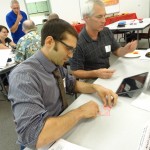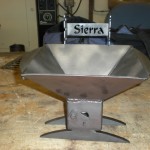 Sierra College (www.sierracollege.edu) welding students are better prepared for employment because the critical math skills sought by industry are being overtly integrated into class projects. Sierra College Welding Department chair, Bill Wenzel worked with Katie Lucero, chair of the Sierra College Math Department to develop new infused math in welding curriculum and test it in two classes. While welding classes have always included some math, incorporating math lessons tied directly to a student project significantly improved students’ math skills.
Sierra College (www.sierracollege.edu) welding students are better prepared for employment because the critical math skills sought by industry are being overtly integrated into class projects. Sierra College Welding Department chair, Bill Wenzel worked with Katie Lucero, chair of the Sierra College Math Department to develop new infused math in welding curriculum and test it in two classes. While welding classes have always included some math, incorporating math lessons tied directly to a student project significantly improved students’ math skills.
The Sierra College IGNITE (Infusing GeN-ed Into Technical Education) project was developed in partnership with the West Virginia University at Parkersburg (WVUP) and funded by the National Science Foundation, according to Carol Pepper-Kittredge, director, Sierra College Center for Applied Competitive Technologies (CACT). (Read the Final Report: Sierra College IGNITE Final Report, Conducted Under the University of West Virginia at Parkersburg National Science Foundation ATE grant award #1003709)
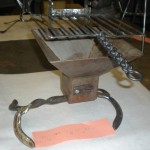 Using the math competencies WVUP identified for infusion into welding, Sierra College faculty developed hands-on, applied math curriculum that related directly to welding projects. Students in Welding Technology 10 classes learned welding and technical skills as they fabricated a Hibachi Barbeque, according to Wenzel. “Classes were provided with drawings that showed measurements as fractions and decimals, step-by-step assembly directions and instruction on the use of shop equipment and hand tools,” said Wenzel. “For the experimental class, we designed weekly math lessons that covered critical math skills that applied directly to the construction of the barbeque.”
Using the math competencies WVUP identified for infusion into welding, Sierra College faculty developed hands-on, applied math curriculum that related directly to welding projects. Students in Welding Technology 10 classes learned welding and technical skills as they fabricated a Hibachi Barbeque, according to Wenzel. “Classes were provided with drawings that showed measurements as fractions and decimals, step-by-step assembly directions and instruction on the use of shop equipment and hand tools,” said Wenzel. “For the experimental class, we designed weekly math lessons that covered critical math skills that applied directly to the construction of the barbeque.”
For example, students multiplied and divided fractions to determine how many lengths of a specified measurement could be cut from a rod. They calculated how much material would be used for the Hibachi handle and the grill. In another exercise, students designed two different grill patterns and calculated the amount of material needed and the cost to construct each design.
“The class that completed the hands-on math exercises performed significantly better than the control group on basic and pre-algebra skills based on pre- and post-tests,” said Wenzel. The infused math in welding curriculum was also tested in another class, Welding Technology 15, and again the students’ mathematics performance improved.
On a student survey, 52% of the students in the infused math WT-10 class had not enrolled in a math class at Sierra College but 82% said they would feel more comfortable taking a math class in the future as a result of the WT-10 class; and 48% would be more likely to take the math assessment for placement in a math class at Sierra College. So, math confidence improved too.
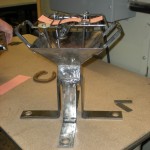 The Sierra College CACT provides customized training in shop math for Placer and Nevada County businesses. “Employers report that skilled employees can’t apply fractions, decimals and basic math to their work,” said Pepper-Kittredge. “Infusing math into welding shows great potential to address the skills gap before students go into the workforce.”
The Sierra College CACT provides customized training in shop math for Placer and Nevada County businesses. “Employers report that skilled employees can’t apply fractions, decimals and basic math to their work,” said Pepper-Kittredge. “Infusing math into welding shows great potential to address the skills gap before students go into the workforce.”
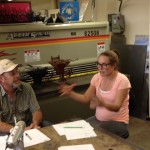 On May 22 at 4 PM, PST you can learn how to “Ignite Your CTE Students’ Math Skills.” Sierra College instructors, Bill Wenzel, Welding and Katie Lucero, Mathematics will present a free webinar on infusing welding assignments with essential math skills.
On May 22 at 4 PM, PST you can learn how to “Ignite Your CTE Students’ Math Skills.” Sierra College instructors, Bill Wenzel, Welding and Katie Lucero, Mathematics will present a free webinar on infusing welding assignments with essential math skills.


